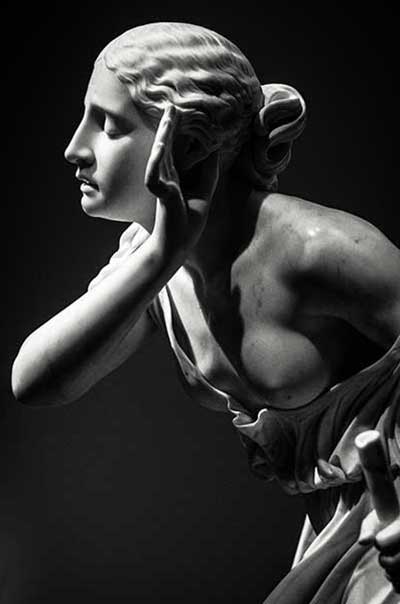
Licence Photography:
Public domain
The Strong lines and the Robust Sketches of Egon Schiele
Egon Schiele, an Austrian artist who painted during 1907-1918, was greatly displeased about the conservative art rules. The famous symbolist painter Gustav Klimt, who helped the junior radical artists with their new contemporary styles, met him during the Vienna Secession cooperations and began a professional, sustainable relationship with the young Schiele [1].
Schiele’s painting was branded as pornography as a young artist and caused many problems. He was forced to leave his residence and faced allegations that led to his arrest and imprisonment [2].
His fearless exploring of twisted bodies and nude shapes, his guiltless view of beauty and the use of innocent elements of natural sexuality made him a progressive and independent painter of his time.
If we pay attention to most of his works, we see that he had used many warm colours, orange, brown, and cream, whether on figurative shapes or the background. Most of Schiele’s coloured paintings include shades of orange or analogous brown. Indeed, he reached more stabilised effects by these earth colours and brought naturalism closer to his art.
Sometimes a low proportion value of blue or a tiny azure or bluish-green in the presence of a superior authorized warm colour made his works genuinely significant.
Sometimes there is no trace of complement colours or orange-blue arrangements. It seems that the homologized closeness of warm colours was organized in advance, and they were located faithfully next to each other.
It looks like Schiele didn’t focus on the colour, but his attention was directed more to the symbolic aspects. His nudes or dressed up figures are pretty exclusive and powerful. His Illustrations techniques of body frames and the muscles and his shadings methods were new and unfamiliar in his time.
You can precisely distinguish his works amongst the other figurative paintings of the early 20th century because his work’s features which he had constructed en maintained in his short life, belonged only to him and couldn’t be created by anybody else.
For him, there was no necessity for details, no obsession for light and colour influence, no glamour or glossiness. His strong lines, robust designs and artistic compositions made him a unique expressionist. He was known as a distinctive artist, needless of ornamental content while he thoughtfully presented a cohesive scene.
The Sad Sketches of Egon Schiele
Egon Schiele grew to more complex thematic subjects such as death and rebirth in his last works. His human figures embodied eccentric gestures, and the portraits on his paintings were persuasively psychological facial expressions.
He left his young mistress, Wally, who worked as a model for him in his early years and married Edith Harms, a more socially acceptable character. He normalised his private life and achieved great success, fame, and artistic recognition in his last years and received many important commissions. [3][4]
Unfortunately, he and his pregnant wife died young because of the Spanish flue Pandemic in 1918 [5]. He died three days after his wife and painted her in some sad sketches in those horrible and dreadful days.
Get more information on this overview page.
Text: Lalerou
© Copyright. All Rights Reserved
- The Art Story. (n.d.). Gustav Klimt and Egon Schiele’s Twisted Fates in Paint | The Art Story. The Art Story Blog. Retrieved February 20, 2023, from https://www.theartstory.org/blog/gustav-klimt-and-egon-schieles-twisted-fates-in-paint/
- Duggan, B. (2014, November 7). How Prison Changed Egon Schiele’s Portraits for Better or Worse. Big Think. Retrieved February 22, 2023, from https://bigthink.com/culture-religion/how-prison-changed-egon-schieles-portraits-for-better-or-worse/
- D’Arcy, D. (2017, November 22). The grave of Schiele’s muse, Wally Neuzil, found in Croatia. The Art Newspaper – International Art News and Events. Retrieved February 23, 2023, from https://www.theartnewspaper.com/2017/11/22/the-grave-of-schieles-muse-wally-neuzil-found-in-croatia
- Egon Schiele [1890-1918] Portrait of Edith (the artist’s wife). (n.d.). Kunstmuseum Den Haag. Retrieved February 21, 2023, from https://www.kunstmuseum.nl/en/collection/portrait-edith-artists-wife
- Kartika, E. (2021, August 11). Reflecting on the Spanish Flu: A Tribute to Egon Schiele’s Loves, Lives, and Depiction of Pandemic. Emiliana Kartika. Retrieved February 24, 2023, from https://emilianakartika.medium.com/reflecting-on-the-spanish-flu-a-tribute-to-egon-schiele-and-his-depiction-of-pandemic-6a60f270a763
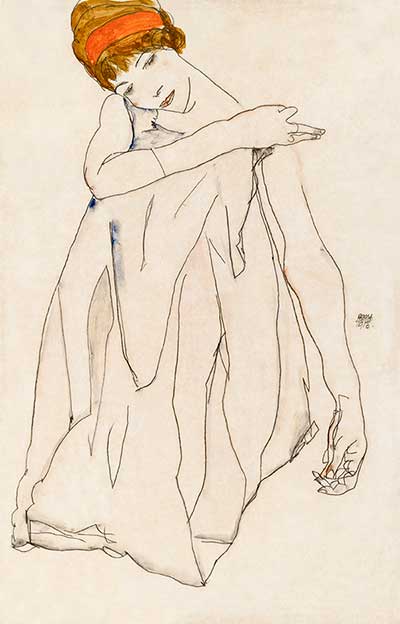
Dancer Egon Schiele
Licence: Public Domain
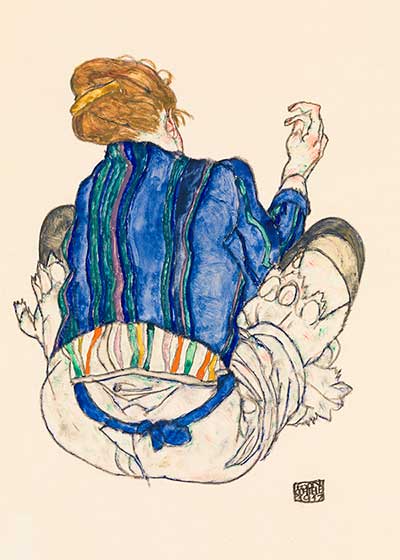
Seated Woman Egon Schiele
Licence: Public Domain
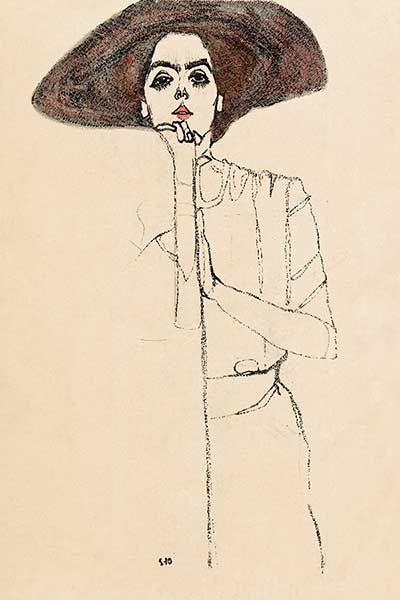
Portrait of a Woman Egon Schiele
Licence: Public Domain
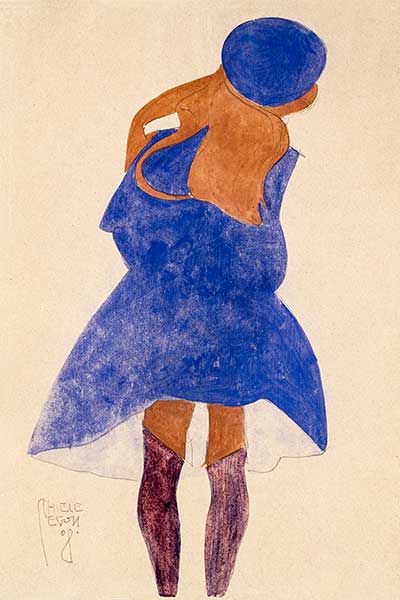
Standing Girl Egon Schiele
Licence: Public Domain
- Category: Modern Art Styles In Painting
Vintage
Vintage
Ornamental
